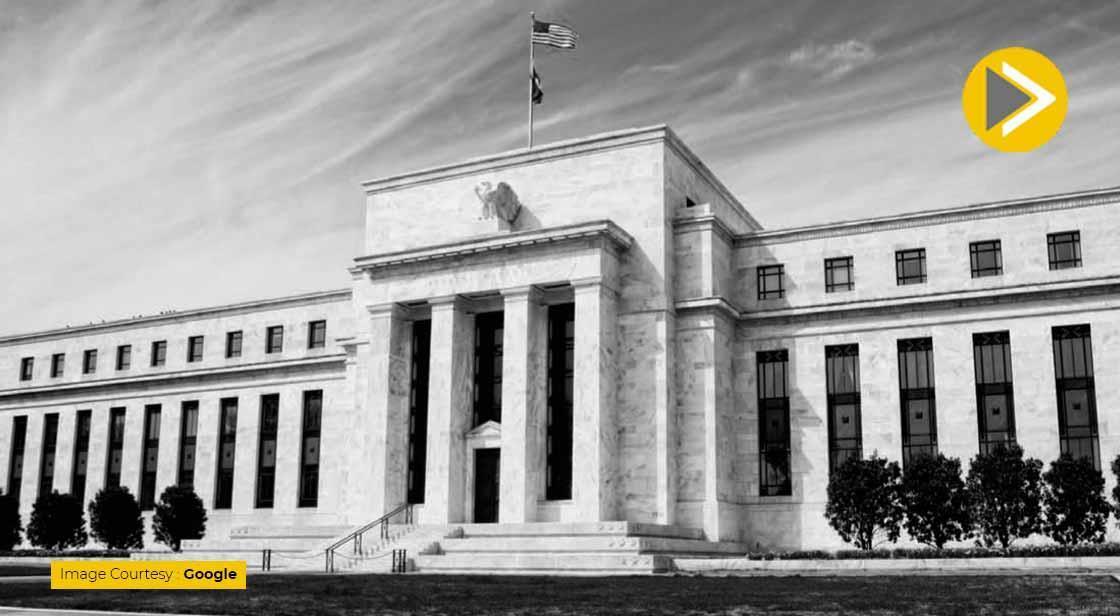Fed Keeps Rates Unchanged Amid Inflation Worries and Tariff Impact

News Synopsis
The U.S. Federal Reserve on Wednesday decided to keep its benchmark interest rates steady, reflecting a cautious approach as inflationary pressures continue to mount due to looming import tariffs proposed by the Trump administration.
Although Fed policymakers maintain that borrowing costs are likely to decrease in 2025, Federal Reserve Chair Jerome Powell advised not to place too much confidence in this expectation, pointing to potential inflationary effects ahead.
“No one holds these … rate paths with a great deal of conviction, and everyone would agree that they’re all going to be data-dependent,” Powell said during a press conference, concluding the Fed’s two-day policy meeting.
The central bank revised its economic outlook, citing weaker growth, rising unemployment, and accelerating inflation. Powell emphasized that without the looming tariffs, the Fed might have considered rate cuts, given the recent favorable inflation figures. However, he warned of a pending cost shock:
“Everyone that I know is forecasting a meaningful increase in inflation in coming months from tariffs, because someone has to pay for the tariffs … between the manufacturer, the exporter, the importer, the retailer,” Powell noted.
“People will be trying not to be the ones who can pick up the cost. Ultimately, the cost of the tariff has to be paid, and some of it will fall on the end consumer.”
Federal Reserve Chair Jerome Powell further remarked:
“We’ll make smarter and better decisions if we just wait a couple of months or however long it takes to get a sense of really what is going to be the pass-through of inflation.”
Fed’s Latest Economic Projections Signal a Challenging Path Ahead
Growth, Jobs, and Inflation Outlook
In the Fed’s updated projections:
-
GDP growth in 2025 is now forecasted at 1.4%, down from 1.7% projected in March.
-
Unemployment is expected to rise to 4.5% by year-end, up from the 4.4% forecast in March and above May’s 4.2% figure.
-
Inflation is predicted to be at 3% by the end of 2025, staying above target.
Although the Fed still expects to lower rates by 0.50 percentage points in 2025, the path beyond has been moderated, with only one 0.25 percentage point rate cut anticipated in each of 2026 and 2027.
Despite this, seven of the 19 policymakers believe no rate cuts will be necessary, revealing a split in opinion about future inflation risks and labor market conditions.
According to projections:
-
Inflation will remain elevated at 2.4% through 2026.
-
It is expected to reduce to 2.1% by 2027, while unemployment remains largely stable.
Trump’s Criticism and Policy Pressure
As the U.S. Federal Reserve held steady on rates, President Donald Trump voiced strong criticism, calling Powell “stupid” and suggesting the Fed should cut rates in half — a move typically reserved for economic crises. He also joked about appointing himself as the Fed chief.
Meanwhile, the central bank continues to focus on economic data, ignoring political pressure. Powell stated:
“For the time being we are well positioned to wait to learn more about the likely course of the economy before considering any adjustments to our policy stance.”
Geopolitical Tensions and Inflation Risks
The Fed did not address recent geopolitical developments, including the Israel-Iran conflict, in its statement. However, Powell noted that while energy prices might rise temporarily, they rarely have lasting impacts on inflation.
“It’s possible energy prices could rise, such price spikes generally fade and don’t have lasting effects on inflation.”
Market Reactions and Future Expectations
-
U.S. stock indexes closed mostly flat.
-
The 10-year Treasury yield remained largely unchanged.
-
Markets continue to price in a likely rate cut in the Fed’s September 16–17 meeting, with another possible cut by the end of 2025.
Jack McIntyre of Brandywine Global summed up the market sentiment:
“There’s still bias towards some version of stagnation, lower growth with rising sticky inflation. It feels like it’s a Fed that’s still being very patient, and they’re still biased towards cutting rates in the near future.”
Conclusion
The Fed’s decision reflects a carefully balanced strategy, addressing both current economic resilience and inflation uncertainty caused by potential tariff shocks. With data dependency as the guiding principle, the Fed appears set for a measured path forward, cautiously navigating inflation, growth, and global risks.
You May Like









